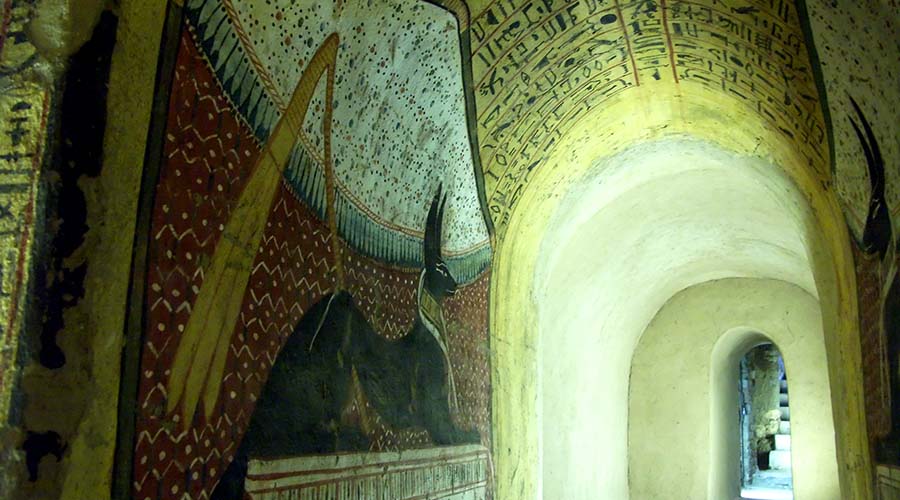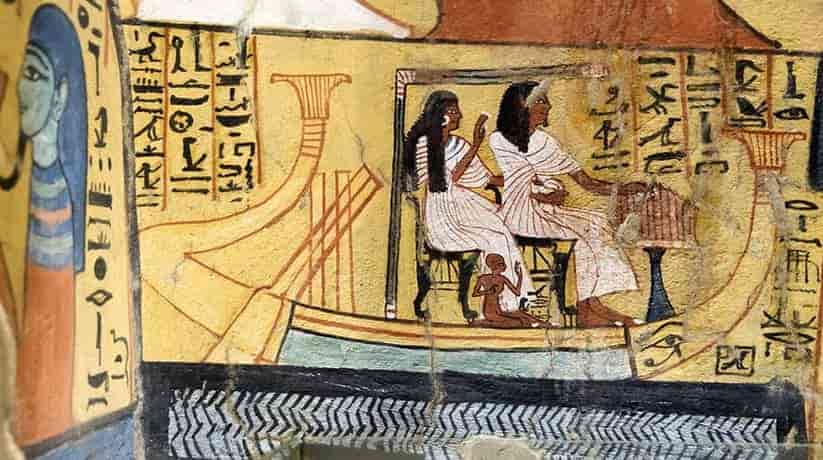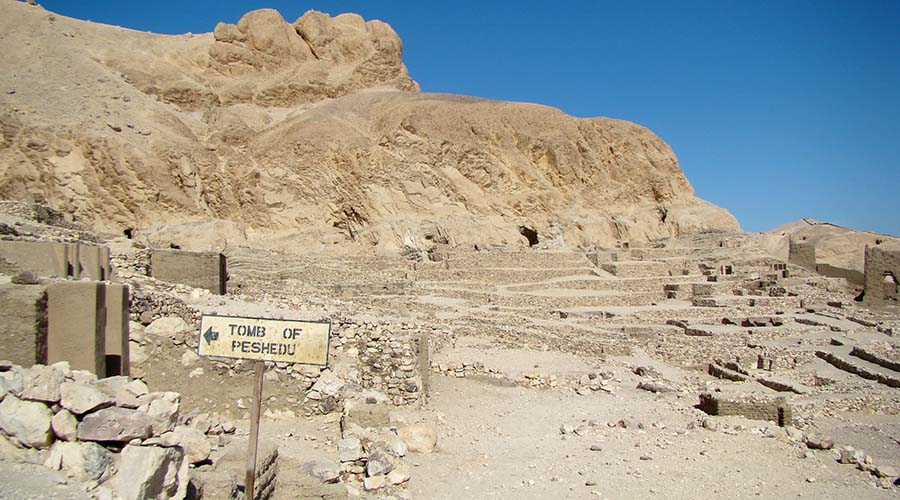Pashedu tomb Luxor Egypt TT3 tours, prices, booking
Pashedu tomb Luxor Egypt TT 3 closed to the public for long time. The tomb of Pashedu located in the necropolis of Deir El Medina on the West Bank at Luxor (ancient Thebes). Little known about this individual. He had the title, “Servant in the Place of Truth on the West of Thebes”. In fact, Pashedu tomb Luxor itself dated back to the early years of Ramses II. That is why the deceased began working while Seti I was King. Pashedu’s father, Menna, worked for Amun temple on the East bank. Pashedu was the first member of his family to work with the community at Deir El Medina. Moreover, he was most likely a stonemason who helped clear the passage. It was through the limestone cliffs when tombs built. He maybe later promoted to a foreman of the left side.
Two teams usually built tombs on the west bank. They consist of a left and right work gang. One team worked on the left side of a tomb while a second team worked on its right. In fact, Pashedu married to Nedjembehdet. Together they had many of sons (and possibly daughters). In fact, Pashedu tomb Luxor known and robbed during antiquity. Moreover, the tomb rediscovered in 1834 by Egyptian soldiers who were hunting treasure. Furthermore, a Scottish traveler and artist named Robert Hays happened to be in Luxor at that time. He heard of the discovery, he made drawings within the tomb. Moreover, the tomb indeed is a simple tomb layout. It is with an antechamber and a short corridor leading to a burial chamber. Only the corridor and burial chamber decorated.
Further details about Pashedu tomb Luxor Egypt:
The corridor also has a large painting on either wall. It is of the god, Anubis as a jackal sitting on a pedestal. These two images are mirror reflections of each other. Between Anubis’ hind paws he holds a nekhakha-flail. As we enter the burial chamber, just above the doorway on the front left wall is a small image. It is of the deceased worshiping the goddess Nut in a tree. Moreover, she emerges from the tree trunk and pours a libation over the kneeling Pashedu. The hand raised to catch the water. In three registers, the rest of the lower wall is a scene. It also depicts rows of the deceased’s family in adoration. Furthermore, in the arch above the doorway, we find Pashedu worshiping Sokar-Osiris. It is in the form of a winged falcon on a boat. In Pashedu tomb Luxor, above the god is also an udjat-eye.
Turning the corner, on the long left wall, there is a scene showing Pashedu and his wife. Moreover, it is with their hands which raised in worship of Horus. By there feet are also a son and granddaughter. Note the wax perfume on his wife’s head. Here, passages from the Book of the Dead surround the images of Pashedu and Nedjembehdet. Further down the wall is a fragmentary image of Horus as a falcon. It also surrounded by the text from the Book of the Dead. Images no longer adorn the lower part of the back wall of the burial chamber. Moreover, within the upper arch we find a scene depicting Osiris in full regalia. A deity raises a burning brazier (candles) before him. Behind him are the mountains of the west over. It also shows a udjat-eye holding a second burning brazier.
More details about Pashedu tomb Luxor Egypt:
On the left is another falcon (Horus). We find Pashedu kneeling at the foot of the scene in adoration. The first scene at the rear of the right wall is Pashedu and his wife on a boat. Moreover, the child with them is perhaps a granddaughter or may be an unknown daughter. In fact, they make their way west to the land of the dead. Moreover, before them on the boat is a table of offerings. Next, there is a also larger scene. It also shows the deceased and a girl worshiping the gods Re-Harakhty, Atum, Knepri and Ptah. They seated. On the right wall towards the front is of Pashedu worshiping Ptah-Sokar-Osiris.
Moreover, on the front right wall of Pashedu tomb Luxor, there is the best known scene in this tomb. Here, Pashedu crouches by a stream in the shade of a palm tree laden with clusters of dates. Chapter 12 of the Book of the Dead describes how the water will quench the fires of the underworld. So, it preserve the deceased from harm. On the right part of the vaulted ceiling we find details a procession of gods. These include, from right, Thoth followed by Hathor and the Re Harakhty. They also include finally Neith. A similar procession of gods adorns the left side of the ceiling.
Entrance to Pashedu tomb Luxor Egypt:
The tomb is open from 6 am to 4 pm in the winter season. To reach the tomb, climb the steps to the Deir El Medina tombs of Sennedjem and Inherkhau. And then, keep going along the steep path up the hillside. A guardian will usually you to unlock the tomb. There is a separate entrance ticket to the tomb which costs 60 Egyptian pound at the gate.

















